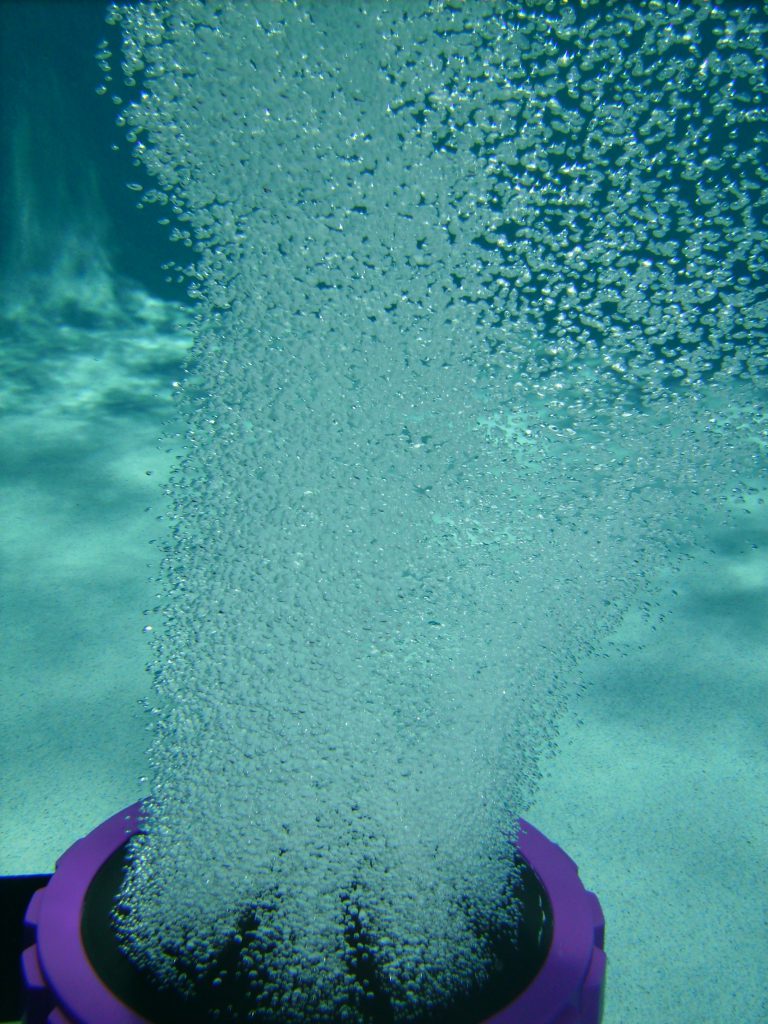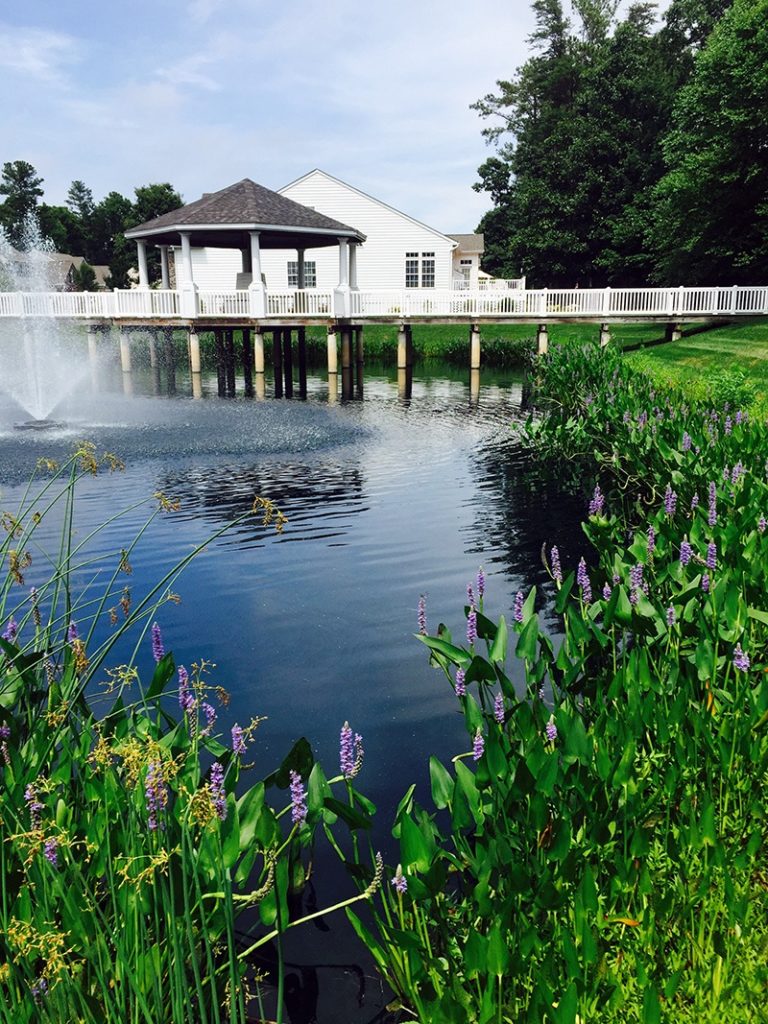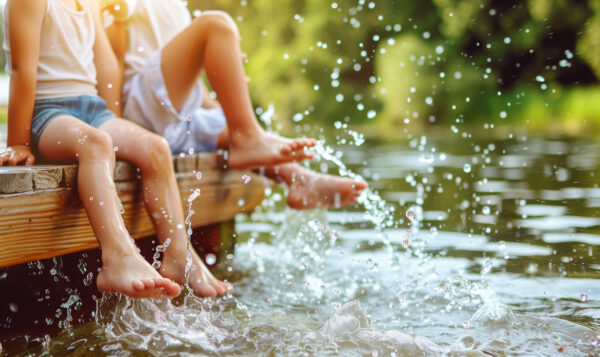

The Importance of Pond Aeration for Your Golf Course
Any member of a golf course maintenance team knows that aerating turf is required for a healthy stand of turf. The same holds true for aerating ponds with either a fountain surface aerator, submersed aeration system, or both. Aeration is a key component of a balanced approach to pond management. As a management tool for water quality, aeration can address a variety of issues such as algae and aquatic weeds, foul odors, fish kills, and insect infestations, to name a few.
Ponds that have a history of nuisance algae and aquatic weeds can greatly benefit from adequate aeration. Oxygen is an important component for a healthy aquatic ecosystem and is required by beneficial bacteria that naturally occur in the water body. These beneficial bacteria are responsible for breaking down organic matter, such as grass clippings, leaf litter, and animal waste that are being introduced into the pond or lake. These bacteria can metabolize excess nitrogen and phosphorus introduced by runoff from fertilization and organic decomposition. When excess nutrients are not effectively metabolized, algae blooms and aquatic weed infestations can result. These nuisance vegetation issues can clog irrigation systems and cover your pond with algae. When a pond or lake is adequately aerated the beneficial bacteria are more productive, which can reduce the nutrient load and break down the organic build-up more efficiently.

Control Water Quality Issues
Aeration is also a solution to a foul “rotten egg” odor coming from your pond. This type of odor is caused by non-beneficial bacteria in the pond that thrive in anoxic (no oxygen) environments. These anoxic-loving bacteria create hydrogen sulfide gas and other gases, creating the tell-tale “rotten egg” odor. Besides the smell, the gases produced by these anoxic bacteria can be detrimental, and in some cases lethal, to aquatic life. Introducing dissolved oxygen into the water column and sediment will help the aerobic beneficial bacteria out-compete the anoxic bacteria and help eliminate the production of these gases. This will improve the decomposition rate of the organic material and reduce or eliminate the “rotten egg” odor.
Adequate aeration can also prevent fish kills, which can bring unwanted attention to the water body and property, by eliminating thermal stratification. Thermal stratification happens when a top layer of warmer water (epilimnion) forms above a layer of cooler water (hypolimnion). The cooler, lower layer of water is unexposed to atmospheric air and essentially suffocates the bottom half of the pond creating an anoxic (no oxygen) dead-zone. Fish kills can occur when a pond or lake is not properly aerated and the thermally stratified water column is suddenly mixed. This mixing of the thermal layers is typically caused by a heavy rain event or high winds, which mix the lower oxygen-deficient layer with the more oxygenated upper layer.

Prevent Mosquitoes and Water Quality Nuisances
Thermal stratification can be mitigated with the addition of an aerator. Adequate aeration circulates the pond’s water column creating a more uniform temperature and water density from the top to the bottom of the pond. This, in turn, allows oxygen to enter the water column by way of atmospheric exchange at the pond’s surface and be circulated to the bottom. Proper, year-round aeration will eliminate the chances of a pond stratifying and prevent the dissolved oxygen from lowering to the lethal levels that cause fish kills.
Another benefit to adding aeration and circulation to your ponds is the reduction of mosquitoes around your course. Mosquitoes lay their eggs in stagnant water. When the eggs develop into larvae, they need the standing water to breathe. In fact, many female mosquitoes will pass by a moving body of water in search of one more suitable and stagnant. The fewer larvae that develop into adults on your course, the more comfortable your guests and staff will be.
Once you have decided that aeration is a water quality management tool that your course would like to implement, choosing what type of aeration system will be the next step and will depend on your pond and your course goals. The two most common methods of aeration are floating fountain aerators and submersed bottom diffused aeration systems. Choosing the most efficient system for a pond is usually determined by the pond’s size, shape, and depths. However, many course owners also consider the aesthetics of a fountain in their decision.

Floating Fountain
Floating fountain aerators offer the benefit of aeration and add an aesthetic feature to the pond and course. They are generally localized and work well for shallower, symmetrically-shaped ponds. The various spray patterns available can also impacts the water body. The size of your pond and personal preference will help determine which pattern would be most suitable for your pond. If you have a pond that is located near the club house or course entrance, it could be further enhanced with lighting for a dramatic evening scene.

Submersed Aeration
Submersed aeration systems release oxygen directly into the water column at air stations placed on the bottom of the pond, and work best in moderate depths to deep ponds. Submersed aeration systems can supply aeration for any shape pond and work well in irregular shaped ponds such as kidney shaped or long narrow ponds where the spray pattern of a fountain could not reach and effectively aerate these areas.
If you have an irregular shaped pond and still desire the beauty of a floating fountain, your lake and pond professional could design an aeration plan that includes both a floating fountain and a submersed aeration system. The fountain would be placed in a central location and the submersed aeration system would be placed in the unaffected outer areas of the pond that having a fountain alone would not adequately aerate.
Aeration is an environmentally sustainable water quality tool that should be used as a part of a comprehensive management plan. The investment in a professionally managed water quality program will ultimately protect your larger investment of maintaining your course’s functionality and beauty.









